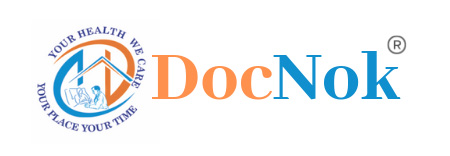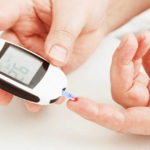Osteoporosis
Osteoporosis is a condition that weakens bones, making them fragile and prone to breaking. It develops slowly over several years and is often only diagnosed when a minor fall or sudden impact causes a bone fracture.
Although a fracture is the first sign of osteoporosis, some older people develop the characteristic stooped (bent forward) posture. It happens when bone in spine have weakened and fractured, making it difficult to support the weight of the body.
Worldwide 8.9 million people are diagnosed with osteoporosis annually, osteoporotic fractures taking place every 3 seconds. More prevalent and acute in rural areas. World over, 1 in 3 women over the age of 50 years and 1 in 5 men over 50 experience osteoporotic fractures. By 2050, worldwide incidence of hip fractures in men is projected to increase by 310% and 240% in women compared to rates in 1990. The combined lifetime risk for hip, forearm and vertebral fractures coming to clinical attention is 40% almost equivalent to cardiovascular risk. Expert groups pegged number of Osteoporosis patients in INDIA at about 36 million as per 2013 projections.
Bones are at their thickest and strongest in your early adult life and their density increases until your late twenties. We gradually start losing bone density from around the age of 35 years.
Losing bone is part of the ageing process but some people lose bone density much faster than normal, leading to osteoporosis.
Bone is made up mostly of collagen fibres, upon which are laid down crystals made from calcium and phosphate that give the bone a structure like scaffolding with fibres forming strong cross-struts. Bone is a living tissue and it can increase its thickness in areas subjected to repeated heavy loads (remodelling) and repair itself when broken.
UNCHANGEABLE CAUSES OF INCREASED BONE LOSS
Increasing age, Family history of Osteoporosis, Female gender is more prone, Early menopause, very thin body frame.
CHANGEABLE CAUSES OF INCREASED BONE LOSS
Inactivity, poor diet with less consumption of calcium and vit D, smoking, alcohol abuse, low BMI.
MEDICALLY RELATED CAUSES OF INCREASED BONE LOSS
Prolonged use of medications which affect bone strength like corticosteroids, oral hypoglycaemic agents some medications for seizures. Vitamin D deficiency, Protein deficiency, Malabsorption syndromes, Crohn’s disease. Chronic liver or kidney disorders, Hyperthyroidism, low testosterone levels – hypogonadism, Hysterectomy.
Besides Xray of bones, Ultrasound or CT scan, BMD- Bone Mineral Density test is an important one and is a brief, painless investigation. National Osteoporosis Foundation, the American Medical Association and other major medical organizations advise DEXA Scan- Dual Energy X ray Absorptiometry.
Cases with slightly lower BMD values are said to be of Osteopenia, where BMD is low but not as low as to be categorized as Osteoporosis.
TREATMENT is advised according to the individual’s condition; with hot baths or cold packs, Transcutaneous Nerve Stimulation to reduce pain, supplements and lifestyle changes alongwith exercise routines including Strength exercises, Balance exercises, Flexibility exercises, Sitting exercises, Weight bearing exercises and Resistance training accordingly.
PREVENTING OSTEOPOROSIS
By making an effort towards lifestyle changes, including regular exercise in routine (moderate intensity aerobics for atleast 150 minutes per week), No smoking and restraining from alcohol abuse, eating healthy diet rich in calcium and sun vitamin D, an active healthy life can be experienced.





Leave a Reply
Want to join the discussion?Feel free to contribute!